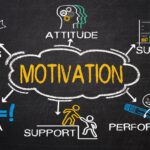My last article, “Brains at Work”, questioned whether the average workplace is designed for the best thought work. It showed that disruption and uncertainty hijack the brain’s limbic system and freeze the ‘thinking cap.” Institute fellow Terry Bennett referred to today’s VUCA world – volatile, uncertain, complex, ambiguous.1 This is an acronym used by the US military to describe extreme conditions in Afghanistan and Iraq. It implies a war-like state; the opposite of the best state for superior thought work at a time of continuous digital disruption.
Another (dark) side of this onslaught is the ‘digital heroin’ that is gaming. The WHO has just named ‘Gaming’ as a mental health disorder, one of 55,000 injuries, diseases and causes of death in the International Classification of Diseases.2
This article looks at how our use of the internet can threaten optimum brain performance and how to counteract this.
Social Brains
“Social interactions are delicious things to the brain.” David Rock3
Our organizations are ideal places for getting smarter through interactions with others, but won’t be when communication is distorted by volatility, uncertainty, complexity or ambiguity, or simply reduced to email. Judging by the number of times clients tell me that email MIScommunication has occurred, email may well be the new digital DISconnection.
Considering the dark side of the internet (and social media), Jaron Lanier, in his book “You Are Not a Gadget”4, gives 10 reasons to delete social media accounts and claims that Silicon Valley bosses don’t let their kids dwell on social media – what does that say?
He points out that ‘irritants’ spike the algorithms to reinforce tribal divides, a claim also made by Safiya Umoja Noble in “Algorithms of Oppression.”5 It appears that algorithms favour verbal vitriol over positive advocacy. It is as if when someone makes a stand for good, the ‘Hounds of Baskerville’ representing the opposite view are unleashed.
This could be a human ‘negative’ bias thing (kill or be killed/amygdala hijack) but it is significant that when people are face to face, there is rarely the same level of vitriol.
In the digital era, people are more connected than ever yet loneliness is worse and mental (ill)health an ever-increasing concern. The UK has just appointed its first Loneliness minister6 and suicide rates are rising in the U.S.7
When Tim Cook monitored his daily device use, he was shocked. This is the time the human brain is exposed to internet/algorithm-driven messaging. It is a sobering thought if you consider that something ‘out there’ decides what you see and hear, influencing what you think, pay attention to and therefore often feel. While we have known for decades the power of advertising, this takes it to a whole new (some would say ‘sinister’) level.
Deliberate ‘Headspace’ Control – Daily Habits
More and more researchers are revealing the need for a positive bias for higher level thought work (never mind mental health). Could it be that we have simply and carelessly developed some bad (even addictive) habits to reach for the negative as a source of brain fodder, using valuable time, energy and attention to indulge in mental junk food? This may sound melodramatic, but even the constant barrage of data hitting the brain is at least exhausting. The brain may well be fatigued before we get to that all-important, complex task so that we can’t do our best work on it.
Yet, the healthy brain seems to have a positive bias. Neuroscientist Dean Burnett points out that human beings prioritise laughing over breathing. (Remember the last time you laughed so much you could hardly breathe?) Even rats laugh he points out, pondering on what they laugh at; mice, he suggests, in a recent interview.8
The popularity of cute pets, even Grumpy Cat, shows the light side of the internet and that humans and humor go well together. Crowd funding sites where people can help others show the positive side of digital connectedness. But the internet, and today’s VUCA workplace, both seem to be loaded towards the negative and uncertainty – neither of these bode well for superior thought work.
Thought leadership
Given that the human brain – or any brain for that matter – clearly does better when in a positive state, what is our role as leaders with this? How do we ensure people have the information and skills to self-manage and deliberately design their inner space for optimum mental health so that they do the best, most fulfilling work of their careers on our watch?
Three important areas to manage:
1. Intrapersonal – the individual’s internal narrative about themselves and their situation
If a person’s explanatory style does not support optimum mental health, this can lead to inferior performance. In his You Tube “The Science of Buoyancy”, Dan Pink9 quotes research that shows that the brain is at its most effective in a ratio of 1 negative to 3 positive thoughts up to I negative to 11 positive thoughts. As he says, that’s pretty positive! (In workplaces where I have asked this question, people say they doubt they maintain a 1:1 ratio.)
It is hardly new to consider internal versus external locus of control and ‘mind control’ – these are well-established concepts; deliberate, rational commitment to choose thoughts that support optimum function, no matter what the provocation. There are many and varied ways to maintain a buoyant outlook – it is a matter of personal choice. It is hard to imagine optimum performance in today’s VUCA environment without deliberate daily habits in this area.
2. Interpersonal – how we interact with others
Clearly there is nothing wrong with ‘brain design’. It is fit for purpose. How we use it is another matter.
Burnett asserts that human beings are not only more intelligent through social interaction, but are actually good at it. He suggests if you had a planet with 7 Billion apes, there would probably be only 4 Billion after a year. Working stuff out with diverse types of people is intrinsically related to our survival and could well account for the size of our cortex compared to other species. That’s good news for cross-functional collaboration (as long as those involved are presenting with a healthy, happy brain.)
Further metrics to guide performance include John Gottman’s research into good relationships: the ratio of positive to negative interactions is 5:1, even during conflict.10
3. Manager/employees – the way in which managers and tech leads shape the employee experience
How would you fare in your life and as a leader on the positivity ratio? How would your organization fare? If even rats laugh, how readily do you bring levity to stressful situations? More importantly, how well-equipped are people in your area to deliberately manage their ‘inner space’ and remain buoyant in high–pressure situations?
The brain is the ultimate problem-solving organ. It is happiest when sorting stuff out and getting the satisfaction of success, but only when the climate is right.
It is up to us as leaders to set the tone and shape the employee experience through how we equip them, how we think, what we say, what we pay attention to and what we do. (Also, what we don’t think, don’t say, ignore and don’t do.)
Thinking is as natural to the brain as breathing is to the lungs. It is up to us, as leaders, to ensure our organization is the best place for people to do their best work hereby giving them the best chance to have their best lives.
As Ralph Stayer said nearly 30 years ago: “The most important kind of learning teaches us to question our own actions and behavior in order to better understand the ways we perform, work and live. Helping human beings fulfill their potential is of course a moral responsibility, but it’s also good business.” 11
Sources:
1. “Humility required for digital era success” by Terry Bennett, June 15, 2018
www.institutefordigitaltransformation.org/humility-required-digital-era-success/
2. “Gaming addiction classified as mental health disorder by WHO” by Kate Kelland June 18, 2018
https://uk.reuters.com/article/us-health-diseases/gaming-addiction-classified-as-mental-health-disorder-by-who-idUKKBN1JE0VI
3. David Rock in a Steelcase Q and A. Neuroleadership and Distractions in the workplace. June 2018
https://www.steelcase.com/eu-en/research/articles/topics/design-q-a/q-david-rock/
4. Jaron Lanier. “You are not a Gadget – 10 arguments for deleting your social media accounts now.” Henry Holt and Company. 2018
https://www.amazon.com/Arguments-Deleting-Social-Media-Accounts/dp/125019668X/ref=pd_lpo_sbs_14_img_0?_encoding=UTF8&psc=1&refRID=HKBE4629AJEEEC2CWTBV#reader_125019668X
5. Safiya Umoja Noble. Algorithms of Oppression – how search engines reinforce racism. February, 2018 https://nyupress.org/books/9781479837243/
6. “How the World’s First Loneliness Minister Will Tackle ‘the Sad Reality of Modern Life’” by Tara John, April 25, 2018
http://time.com/5248016/tracey-crouch-uk-loneliness-minister/
7. “Suicides rates rising across the US.” Thursday, June 7, 2018 press release
https://www.cdc.gov/media/releases/2018/p0607-suicide-prevention.html
8. “The Scientific Truth about Happiness.” Dean Burnett interview. 17 June 2018 https://www.radionz.co.nz/audio/player?audio_id=2018649655
9. Dan Pink You Tube: “The Science of Buoyancy” https://www.youtube.com/watch?v=eRnjy4MJdZs
10. “John Gottman on Successful Relationships” by executive coach, Ed Batista. January 2007
http://www.edbatista.com/2007/01/john_gottman_on.html
11. “How I learned to let my workers lead.” Ralph Stayer. HBR. Nov-Dec 1990
https://hbr.org/1990/11/how-i-learned-to-let-my-workers-lead






Good article, Cherri. You might be interested in reading “Glow Kids: How Screen Addiction is Hijacking Our Kids – and How to Break the Trance” by Nicholas Kardaras. One quote from the book – “Meanwhile, China has identified Internet Addiction Disorder (IAD) as its number-one health crisis, with more than 20 million Internet-addicted teens, and South Korea has opened 400 tech addiction rehab facilities and given every student, teacher and parent a handbook warning them of the potential dangers of screens and technology.”